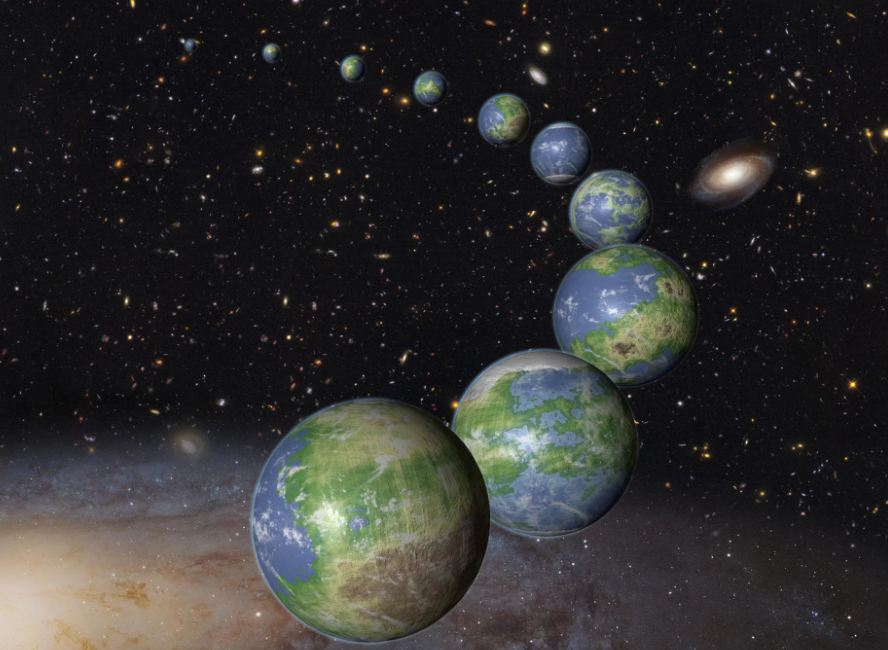
A few decades ago, finding life beyond Earth was an idle dream — but today, astrobiology is a thriving field, fed by incredible discoveries across different realms of science and the possibility of still more to come.
And to shape where astrobiology goes next, the National Academies of Sciences, Engineering and Medicine gathered a panel of expert scientists to reflect on what has happened in the field since 2015 and what consensus suggests should be priorities going forward. The result is a paper published today (Oct. 10) highlighting a suite of recommendations for NASA.
“If we’re really going to achieve a goal as lofty as this, then outside-the-box thinking is really required,” committee chair Barbara Sherwood Lollar, an astrobiologist at the University of Toronto, told Space.com, calling astrobiology the “quintessential example” of a field that needs creative thinking. “It is an endless journey to continue to broaden our horizons,” she said.
The report, along with last month’s similar survey of exoplanet research, will feed into two even more sweeping National Academies committee processes: two decadal surveys covering first astronomy and astrophysics, then planetary sciences. Once complete, those decadal surveys will govern NASA’s decision-making about which projects and missions to pursue and how to prioritize them.
In part, the report summarizes technological needs of the field over the next decades: To be successful, scientists will need incredibly powerful telescopes and starlight-blocking instruments that have yet to be built. But the report also touches on mindsets and research practices.
Sherwood Lollar said that’s what sets astrobiology apart from many other fields: an emphasis interdisciplinary thinking that pulls together a wide range of scientific specialties. The new recommendations reflect this, promoting systems-level thinking, the treatment of planets as a whole and looking at habitability as a spectrum, rather than as a simple yes-or-no question.
“I think that it’s heading in a really good direction,” Sara Walker, an astrobiologist at Arizona State University not involved in the report, told Space.com. “You can’t think about a planet as habitable or not.”
That change of thinking has come, in part, from discoveries about our own planet and how tenacious life here is. From deep-sea vents where microbes feast on chemicals to high in the harsh Atacama Desert to far below the ice of Antarctica, life keeps popping up where scientists had thought conditions were too forbidding. These finds prove that what’s uninhabitable for one type of life is perfectly cozy for others.
All those discoveries also led the report writers to emphasize thinking more creatively about where to look for life in our own solar system. In particular, they highlighted the possibility of subsurface life.
The report also emphasizes a key challenge to identifying life: accurately finding and interpreting what scientists call biosignatures, the chemical changes characteristic of life. That’s not as straightforward as it sounds, astrobiologists know. Particularly in foreign solar systems, it’s difficult even to spot potential biosignatures, and the universe doesn’t come equipped with giant flashing arrows pointing to life.
“Life doesn’t really do anything that chemistry can’t do, unless you talk about really complex molecules like drugs and things,” Walker said. Take oxygen, for example, which early single-celled life pumped into Earth’s atmosphere in large amounts, but which can also be produced by non-living processes. “Life is a system-level property, so you can’t really take apart the components and say that the components are indicative of life,” Walker added. Instead, the report emphasizes that scientists will have to figure out how to vet potential biosignature identifications, learning to spot misleading signals. [Photos: Ancient Mars Lake Could Have Supported Life]
But there are also recommendations that focus on a very familiar type of life: humans themselves. In order to succeed, the report finds, NASA needs to build collaborations, by working with private organizations and other countries and by connecting astrobiology into all stages of planning for all different types of missions.
The report also marks the reintroduction of the search for extraterrestrial intelligence, or SETI, into mainstream research. Cut off from NASA funding since the 1990s, the field seeks signals of technologically advanced civilizations — searching for life like us, rather than single-celled organisms.
“It was just really frustrating and scientifically unsupportable to say that a particular piece of research was not part of the astrobiology picture,” Jill Tarter, a retired astrobiologist at the independent nonprofit SETI Institute who wasn’t on the committee, told Space.com. “At least it’s now legitimate and discussed as part of the whole astrobiology umbrella suite of investigations.”
Most of all, the report emphasizes the tantalizing promise of astrobiology itself and its potential impact on our lives and worldviews. “Taking a look at what we find out from these other planetary systems can shine a light back on Earth,” Sherwood Lollar said. “It really is a comparative approach where by taking a look at all of these complex systems, we can learn more about each and every one of them.”
All told, Walker said that she was pleased to see the report reflect how dynamically the field is maturing. “It’s actually moving to being a real science and not just an idea, and this document, I think, really reflects that,” Walker said.





























